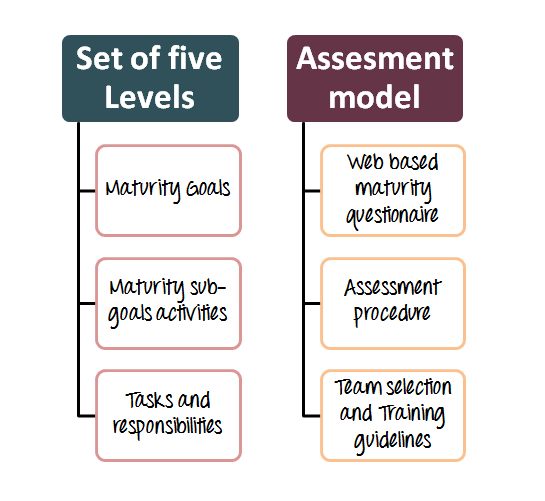
What is Test Maturity Model (TMM) in Software Testing?
Testing Maturity Model in Software Testing
Testing Maturity Model (TMM) in Software Testing is a framework for evaluating the maturity of software testing processes. The purpose of using testing maturity model is identifying maturity and providing targets to improve the software testing process to achieve progress. It can be complemented with any process improvement model or can be used as a stand alone model.
The Test Maturity Model (TMM) is based on the Capability Maturity Model (CMM) and it was first developed by the Illinois Institute of Technology. It is a detailed model for test process improvement.
TMM model has major two components
- A set of 5 levels that define testing capability
- An Assessment Model

Different Levels of Maturity Model
The five levels of the TMM helps the organization to determine the maturity of its process and to identify the next improvement steps that are essential to achieving a higher level of test maturity.
| TMM Levels | Goals | An objective of TMM levels |
|---|---|---|
| Level 1: Initial | Software should run successfully |
|
| Level 2: Defined | Develop testing and debugging goals and policies |
|
| Level 3: Integrated | Integration of testing into the software lifecycle |
|
| Level 4: Management and Measurement | Establish a test measurement program |
|
| Level 5: Optimized | Test process optimization |
|
Difference between CMM & TMM
| CMM | TMM |
|---|---|
|
|
Conclusion:
Software maintenance is expensive and time-consuming when defects are identified after project delivery. Consequently, while detecting defects is important, it is also important that software makes minimum errors during the development phase. A standard testing process like TMM can help to achieve this. TMM (Testing Maturity Model) that is specially designed to address testing can help the organization to improve the maturity of their testing practices.




0 Response to "What is Test Maturity Model (TMM) in Software Testing?"
Post a Comment